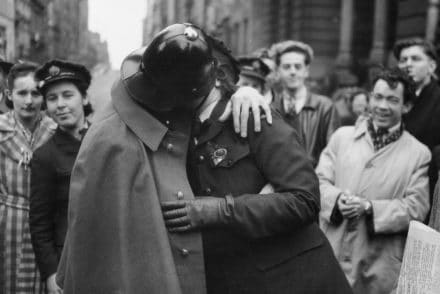She was in the tub singing Christmas carols. Mid-verse, she stopped. I said, “Are you okay?” She didn’t answer, and I knew then that everything had fallen apart. That after seven years seizure-free, my twelve-year-old daughter, Sia, was having a seizure. But what I didn’t know was that at that moment we were losing her, or, rather, we were losing the essence of her. And it wasn’t to the epilepsy. No. It was to the drug that was supposed to help her.
I should make it clear that I am a big believer in western medicine. I believe in vaccinations and mammograms and pills of all sizes and shapes. But this I know, when it comes to controlling seizures, everything is guesswork: Here, take this yellow pill. No luck? Add the blue pill. Still no luck? How about the white pill? Which leads me to Topamax, a little white pill about the size of one of your smaller baby teeth.
Topamax is an anti-convulsant, and it’s sometimes called dopamax because it makes you stupid, which is why no one starts your kid on Topamax right away. They wait until a bunch of other medications prove ineffective and then they prescribe Topamax. By the time Sia was prescribed Topamax two years after that day I found her in the tub, she had gone from being a spunky if quirky girl to a monster of fear. She was afraid to bathe because of the tub incident. She would say she had showered when she had only gotten her hair wet, and when she got to school her hair would dry into oily ribbons, and on her face she would wear a look of abject terror, and if anyone would talk to her she would tell them how scared she was that she might have a seizure. Of course, those are all excellent ways to drive away friends and to mark yourself as the sick, weak wildebeest of the middle school savanna. Kids she didn’t even know would follow her in the halls and yell, “seizure, seizure, seizure.” Whenever a teacher left the room, boys would turn the classroom lights on and off, knowing full well–because she told them–that flashing lights could actually cause her to have a seizure.
When you are watching your child fall deep into the rabbit hole of victimization and anxiety and depression and friendlessness and hopelessness and seizures, you eventually reach a place where you start to say, “You know what we should do? We should totally remove half her brain,” because that is a treatment for epilepsy. Neurosurgeons remove the part of the brain where the seizures originate and oftentimes that will stop the seizures. But Sia was not a good candidate for brain surgery so instead we continued her on a horrible cocktail of drugs that included the stupid pill, Topamax.
The Topamax did three things. One. It did have some impact on her seizures. It reduced them to about one a week. Two, it suppressed her appetite. She barely ate. Already tiny at five foot one, she became hollowed out eyes and cheeks. Three, it seriously affected her cognition. She couldn’t do math anymore, for example. It also slowed down her brain so much that she would have to search for words the same way you might search for Waldo in a Where’s Waldo book.
One day I was helping her with an English assignment. She needed to write a poem about a dog, but she could not say anything about dogs because the Topamax had stolen her words. I said, “What color is a dog?” When she could not answer, I tried a different tack. “What color is our dog?”
She said, “Black.”
“That’s right!” I crowed with the enthusiasm of a game show host. “Maybe we could say the dog was black. What’s our dog’s name?”
“Scout.”
“That’s right! I wonder if we can find a word that rhymes with Scout….like…maybe…pout.”
Do I need to go on? Do I need to confess that she never finished the poem, that I wrote it for her, that I earned her an A? Or can you see that she was gone, that she was a hollow husk, that she had been medicated away? She had lost her words. She had lost herself, and her emptiness spilled over onto the rest of our family: onto me, onto her father, and onto her younger sister. All that emptiness. It weighed us down, the final, cruelest layer on the layer cake of heartbreak we had been swallowing since, really, the day Sia first got her diagnosis but that had gotten so dense and bitter and salty in the last two years.
In this horrible place that we found ourselves, my husband and I decided that we had to do something, and we had to do something big, so we decided that we would fly our family from Southern California to Washington DC to participate in an annual event called the national walk for epilepsy, which benefits the Epilepsy Foundation. We wanted Sia and her sister to see that in the face of hopelessness you fight, you make a stand. Of course, we didn’t really mean it. At least, in my case, I didn’t mean it. I had never cultivated courage or perseverance. My whole life I had run away from hardship. Even in the face of Sia’s epilepsy diagnosis I had gone on as if nothing had changed, a smile on my face, until—six weeks later—I succumbed to panic attacks. Because that is what I do when the going gets tough: I deny or I panic. So this fighting for a cause thing, this looking it in the eye–was new to all of us. Still, we did what you’re supposed to do. We told our friends and family and we raised money and we decided that this would be a whole family vacation. We would pull Sia and her sister out of school for almost a week and we would do all the touristy stuff that you do when you are a family in Washington DC. And we did. We saw the monuments and the Smithsonian, and the whole time, there was Sia, with her lost words and dirty hair. It was like traveling with a ghost.
The day of the walk came and we donned tee shirts that all the participants had received in the mail–white for me and my husband and younger daughter and purple for Sia because purple is the epilepsy color, and everyone with epilepsy got purple–and we made our way to the national Mall, where the walk started. As we walked, we started to see a few white shirts and then a few purple shirts and then more white shirts and more purple shirts, and then it became clear that we had joined this wonderful sea of white and purple atoms, where the purple tee-shirts were the nuclei and every nucleus was surrounded by tightly packed white electrons of love and faith and support.
I cried. It was beautiful and inspirational, but also it was devastating. Everyone else had so many electrons around their nucleus. They had teams of people—sometimes dozens–all with banners and flags, and we were three people surrounding Sia, and I realized that somehow our whole family had become as isolated as my daughter. The truth is, people abandoned us. They didn’t like to see Sia that way. My own mother moved six hundred miles away because we were a train wreck and she couldn’t bear the carnage. But I know too that I isolated myself. I was ashamed. I was ashamed of Sia’s neediness and her stringy hair, and I knew we had become everyone’s cautionary tale, “Oh we have problems, but at least we aren’t the Finnegans.” And I hated thinking of everyone pitying us. Because I knew Sia was more. She had so much heart and beauty and love and intelligence trapped inside her. And, of course, realizing that shamed me too because she had so much heart and beauty and love and intelligence trapped inside her and all I saw was stringy hair.
The walk was getting loud. Music and chatter filled the air, and finally Sia found her words, and her words were these: “It’s too loud.”
The skin-tightening pull of frustration quickly pushed aside my tears. “It’s too loud?” I thought. “We flew across a continent and it’s too loud? That’s all you have to say? Those are the only words you will give us? Really?” But I didn’t say that. I took a deep breath and I smiled. I reassured Sia that she was doing great, because when you are the seizure mama that is what you do.
After the walk we caught a subway back to the hotel, all of us feeling flat–moved but also disheartened by the walk, the journey, we were still on. I saw a boy further down on the subway car. He was wearing his own purple tee shirt. I nudged Sia. I said, “Look, he has a purple shirt too.” She looked at the boy and let the words sink in, and after a minute he looked at her too, and she pointed at her shirt. He didn’t smile, but he nodded.
“He has a purple shirt too,” she said, the words filling her, spreading not just past her lips but past the medicated haze and reaching a place deep inside both of us, a place not of isolation but of connection, of contact, of heart, beauty, love, intelligence. She was in there, my Sia. She was in that shell.
“Yeah,” I said, “He has a purple shirt too.”
Margaret Finnegan is the author of two books, Selling Suffrage (nonfiction, Columbia University Press) and The Goddess Lounge (fiction, Lucky Bat Books) and her work has appeared in Salon, LA Times, FamilyFun and other publications. She also teaches composition at Cal State LA. Her Twitter handle is @FinneganBegin.

The 12 Day Detox is here. Sign up now for May 25th cleanse. Space is limited. This detox comes at just the perfect time. Reprogram your body and mind as we move into the new season of spring. This is your time of rejuvenation and renewal.This is not a juice fast, or a detox based on deprivation.







2 Comments
Thank you for sharing your story.
Heartbreaking and beautiful. My son wears a purple shirt too.